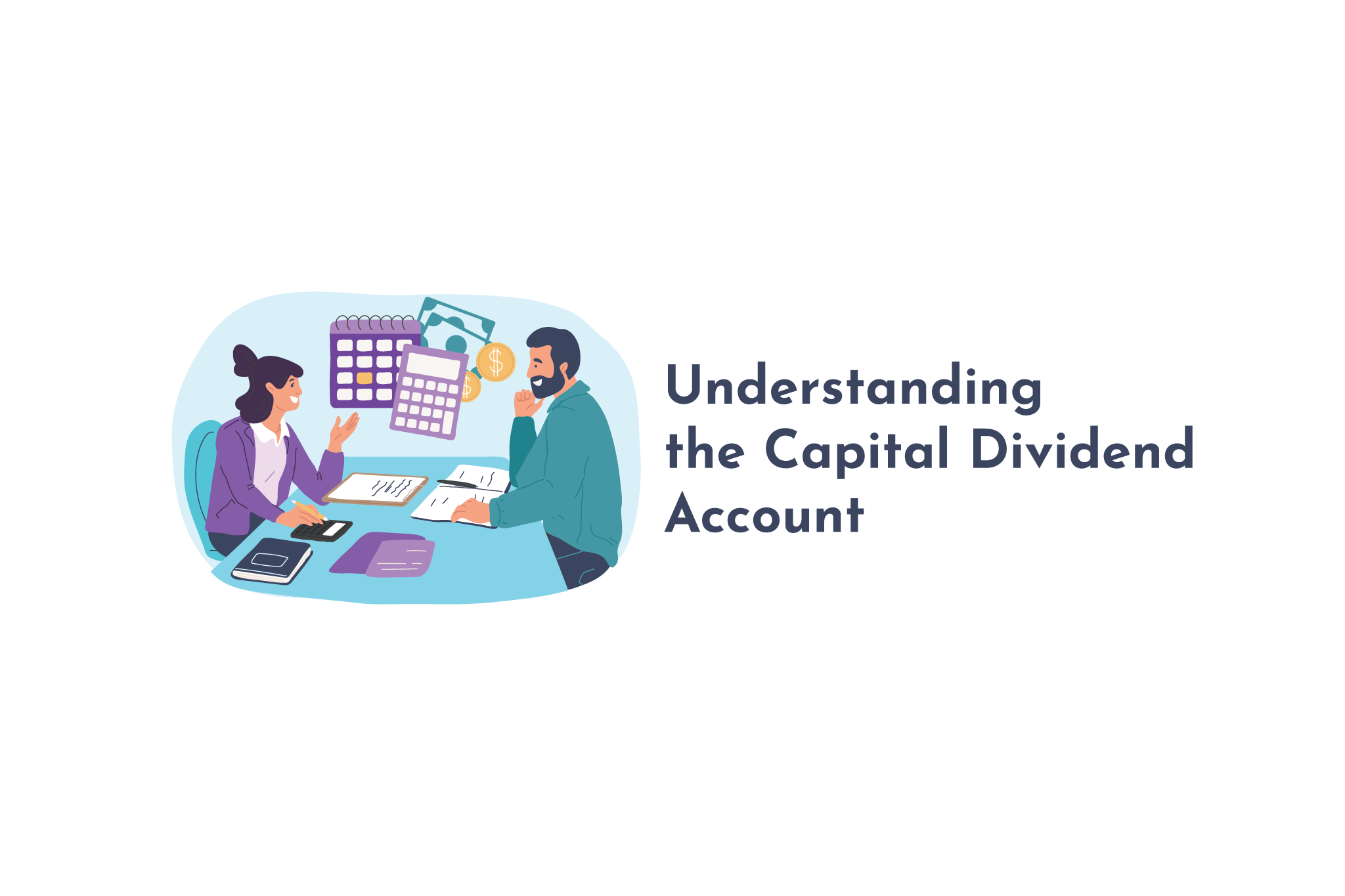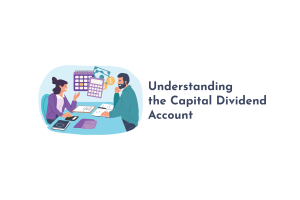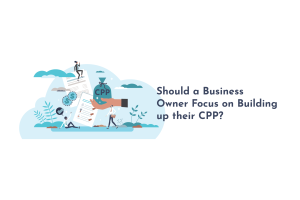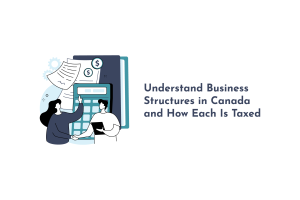If you are the owner of an incorporated business in Canada, every shareholder seems to be searching for the ability to withdraw cash from your corporation tax-free. One of the potential sources of a tax-free payment to a shareholder is the Capital Dividend Account (CDA). How this account works and where credit in the account comes from is something that all business owners should understand. You need to know that your Capital Dividend Account will not show up on your balance sheet. It is something that your accountant will work to keep track of and is an essential part of the integration principle of taxation in Canada. Let’s look at how the CDA works and how it can be advantageous to you and your business.
In this article:
- What is Tax Integration, and Why is it Important for the CDA?
- How Do I Build Up Credit in My Capital Dividend Account?
- Life Insurance and the Capital Dividend Account
- The Capital Dividend Account and Business Continuity
- Conclusion
What is Tax Integration, and Why is it Important for the CDA?
Central to the Canadian taxation system is a principle known as tax integration. Tax integration is the idea that income should be subject to similar tax rates once it reaches a taxpayer, regardless of how many steps it goes through to get there. An example of this is the dividend tax credit that applies to eligible dividends from Canadian Corporations. The dividend tax credit uses a gross-up and credit model that reflects that a dividend received by a shareholder has already had some tax paid on it at the corporate level and, as such, should not be fully taxable the same way regular income would be to the receiver. This is an important consideration for your business’s Capital Dividend Account because credits in the account are generated by specific transactions for which there would be no tax owed if the funds were received personally. The CDA is the account that lets you make tax-free payments to the shareholders.

How Do I Build Up Credit in My Capital Dividend Account?
One key thing to remember is that your corporation’s Capital Dividend Account is a notional account; it is not showing up on your financial statements. This means that there is a separate calculation for how much credit is in it each year. All business owners love the idea of building up credit in an account where they can make tax-free payments to shareholders, so knowing what adds to your balance is important. Some of the most common ways that CDA credit can accumulate include:
- Capital gains from the sale of assets – As an individual, when you have a capital gain, only a portion of it is considered taxable income (50%-66.67% is included in your income, depending on the amount of the gain). In order for corporations to function in a similar way, the tax-free portion of the capital gain will be added to the CDA balance.
- Capital Dividends received from other businesses – If you invest corporately in another business and they pay your corporation a capital dividend, this amount is reflected in the Capital Dividend Account balance.
- Life insurance proceeds – if your corporation owns a life insurance policy and the person who is covered dies the proceeds from the life insurance that the corporation receives, less the adjusted cost basis of the policy, will create a credit in the Capital Dividend Account.
The first two are fairly straightforward; the life insurance credit bears a bit more looking into.
Life Insurance and the Capital Dividend Account
If your corporation owns a life insurance policy on someone and the corporation is also the beneficiary of the policy, when the insured person dies, the corporation receives the death benefit payment. Consider the idea of tax integration here. Personally, if you own life insurance, the death benefit payment is not taxable income to your beneficiaries. The simple explanation for this is that you have personally paid your life insurance premiums with after-tax dollars, so the death benefit should be paid tax-free. Many people assume that a business would be allowed to deduct the premiums it pays on corporately owned life insurance. This most often is not the case. Since the corporation has to pay the premiums from its tax-paid dollars, logic follows that the death benefit should be tax-free here as well. This is where the credit in the Capital Dividend Account is created. There is one minor difference, though, and it requires an explanation of some confusing terminology. You may see the acronym ACB when it applies to both investments and life insurance. While it would be great if it meant the same thing, it doesn’t, and here’s where some confusion starts. ACB has two different meanings:
- Adjusted Cost Base – This is the cost of a capital property plus any expenses required to acquire it, and it will be used to calculate capital gains on the sale of that property. This is the common definition that you will run across in the world of investments.
- Adjusted Cost Basis – Life Insurance is not considered a capital property, so when we talk about the adjusted cost basis of a policy, in a simplified form, it refers to the amount of premiums paid for the policy, less the net cost of the actual pure insurance. Trust me, there’s actually way more to it, and this is a complicated calculation. Luckily, the insurer keeps track of it and will be able to provide you with the number if and when it is needed.
So there we have it. Two different meanings for the term ‘ACB,’ and both of them play into the creation of credit in the Capital Dividend Account. Now that we know what each term means, the credit a life insurance policy will create in the Capital Dividend Account is equal to the amount of the death benefit from the policy minus the policy’s adjusted cost basis. Keeping this in mind, let’s look at the Capital Dividend Account and the ideas behind buy-sell agreements and shareholder agreements.

The Capital Dividend Account and Business Continuity
The Capital Dividend Account often comes into play when we are discussing buy-sell agreements that are triggered by the death of a shareholder. It is a sound business practice for shareholders to have an agreement in place that, in the event that one of the shareholders passes away, there is a requirement that the corporation purchase back the shares of the deceased person. Often, this is funded using a life insurance policy. The funds from the policy are paid to the corporation, and in turn, the corporation knows that it will have the liquidity needed to pay for the shares they are required to buy. There are examples of this transaction occurring many times with Canadian businesses successfully over the years. As a side note, while I am by no means a lawyer, it may be in the best interest of all parties to review any shareholder agreements and see if there is a requirement to pay for shares of a deceased shareholder in the form of a capital dividend payment. A corporation has the right to elect to pay a capital dividend to shareholders, but not the requirement. There are examples of situations in Canada where, after receiving life insurance proceeds, a corporation elected not to use the credit created in the Capital Dividend Account to purchase the shares of the deceased person. By not declaring the payment as a capital dividend, there was a large taxable income hit upon the transaction for the sellers of the shares. For example, you can look up the case of Fernando Ribeiro. (Ribeiro Estate vs. Braun Nursery Limited, 2009 CanLII 1149, ONSC). Reviewing your shareholder agreement could potentially save your beneficiaries a large amount of money that would otherwise be owed to the government.
Conclusion
The presence of an account where a shareholder can receive payments from a corporation without triggering taxable income is an idea that many business owners love. One of the major hurdles that owners face with their businesses is how to withdraw money from their corporations without paying a high amount of income tax. The Capital Dividend Account is one tool that you need to be aware of to help with this idea. As I mentioned previously, having a strong accounting and financial advisory team for your business will help you stay on top of how much credit you have in your CDA and when to elect to use it. Reach out to the team at Strata Accounting and Strata Wealth & Risk Management to see how their team of experts can aid you in making the most tax-efficient plans possible for you and your business.





